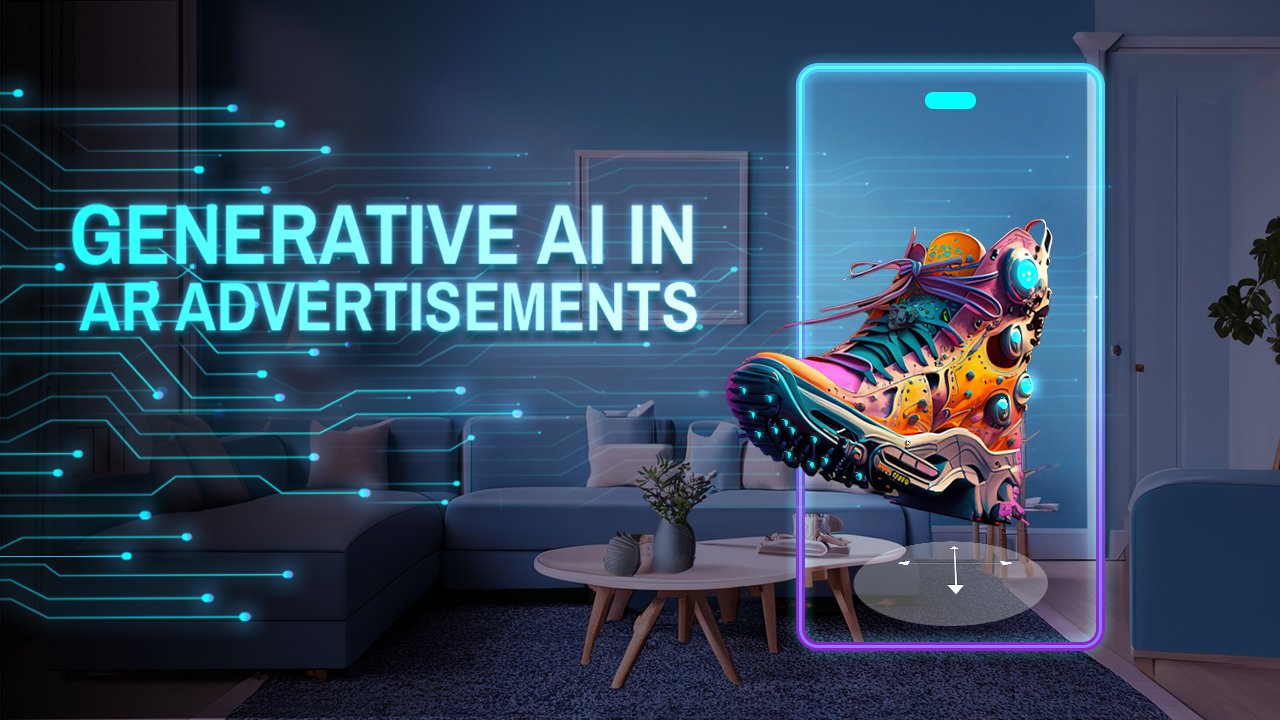Augmented Reality(AR) has taken the world by storm.
The recent announcement by Mark Zuckerberg on making Facebook a metaverse has made many people aware of the existence of Augmented Reality and its importance. Many brands use AR to create a buzz around themselves. But many of the organizations are yet to explore that avenue.
As the number of organizations tinkering with AR is increasing, the usage of AR creation platforms is also booming. Many companies have ventured into making low code or no code AR creation platforms that are easy to use and deploy.
If you are somebody who needs to leverage the power of AR, to leave your audience captivated, you have come to the right place. We understand that companies want their campaigns to be deployed faster and they cannot go on and hire a whole team that is dedicated to AR.
So the need for no-code AR platforms is on the rise. Now organizations can easily use those platforms to create customized AR campaigns and deploy them anywhere. Let’s explore them together.
Some use cases for AR in various industries are
- Education
Students learn better when they are engaged. Many education platforms are using AR to create more engaging learning content so that students don’t lose focus and also have fun doing that. Integrating AR with classroom lectures has also made it easier for students to learn concepts. Byjus has started to inculcate AR models in their tutorials to grab an edge above all existing online Edtech companies
- Tourism:
Wouldn’t it be better if you could try out an experience before booking tickets for a place? Some tourism companies are in the process of allowing people to experience travel to a place before they book a package to visit the place. You will get to see a hotel and the room before booking it for your stay. Travel apps will make it easier for the tourists to experience a place and provide better and accurate information about the place. Museum of Natural history made an enriching experience using AR, one has to download the Skin and Bones app and when they overlay the camera over the carcass they can see how the animal looked like when it was alive. - Medical:
AR makes it easier for students to practice easily on virtual patients before actually going to perform the surgeries. Operating highly complex equipment can be also learnt before actually using that equipment in real life and avoiding any mistakes. Surgeons at the Imperial College London used Microsoft’s HoloLens AR glasses during surgeries. Hololens allows surgeons to overlay 3D digital models of previously done CT scans onto a patient’s limb during reconstructive surgery to virtually see the bones and the course of blood vessels accurately. - Automotive:
AR can help improve safety of passengers, it can overlay safety warnings in the line of sight of the driver so that he/she is more careful. It will become easier for the driver to navigate while driving, he/she won’t have to look at their mobile for directions and can totally focus on driving. At Mercedes the engineers can virtually integrate different engine variants in the car chassis using AR, this simulation helps them to see if the new engine design would fit in an existing car or not. - Retail:
Brands have started to use AR to encourage people to virtually try clothes and buy. In the brick and mortar stores also they have used the same technique so that people don’t have to spend much time trying out clothes physically. IKEA’s place app allows customers to place the furniture in their home and see how it would look and then make an informed decision on whether to buy the furniture or not.
Top AR Creation platforms
Some of the best Augmented Reality Development tools:

Vossle
Vossle is one of the best AR platforms in the market. Vossle is a do it yourself, SaaS platform to help your business create an enriching WebAR (app-less augmented reality) experience in under a minute. Vossle does away with a lot of redundancy. It provides a ready-to-use interface for anybody without the need for professional developers.
Vossle is helping to democratize AR right from the very onset of the creation of the AR experience. The entire creation of the AR experience is highly modularized. As a brand AR experience creator, you only need to have a 3D model (for markerless AR) or a marker image handy (in the case of marker-based AR).
Vossle can make it easy for your organization to make and deploy AR campaigns/features at a fast rate. Just create an account, upload your content, make your own AR and deploy. It is as easy as it gets. Sign up for a free trial here.
The experiences built of Vossle are supported by all smartphone browsers like :
- Chrome
- Safari
- Edge
- Mozilla Firefox
and many more
SparkAR Studio
SparkAR Studio also helps create AR experiences, it provides you with an option to create an AR experience with or without code. Visual programming can help you simply drag and drop elements and see how they interact with each other.
The platform can help you make custom textures and materials for your audience. It is very easy to import your own 3D models and sound effects to the platform and then make a customized AR experience.
You can share the AR you have made across social media. Although you require some programming knowledge to get started with this platform. The AR experience created by this platform is only supported by Instagram and Facebook. Also, it consumes a lot of RAM.
EasyAR
EasyAR SDK is free to use. And the best thing about it is there is no watermark even though it is free. It provides AR features like image recognition for multiple targets.
As opposed to many other platforms it does not have a built-in object manager but targets are identified using predefined 3D models.
The platforms supporting EasyAR built AR solutions include:
- Android,
- UWP
- iOS
- Windows
- MacOS
- Unity Editor
One problem with this SDK is that it is bulky and there are performance issues. One can make very flexible solutions with this SDK but the lack of documentation and tutorials for this service makes it difficult for the user to use the service.
Vuforia
Vuforia is one of the most popularly used AR frameworks. Qualcomm introduced the world to Vuforia – the company which originally specialized in the development of wireless communication tools.
At the heart of the platform is a C++ library called QCAR containing image rendering features and targets like cuboid, cylinder, word targets, etc. Targets in the platform are real-world objects, which when recognized help to overlay virtual objects in your immediate reality.
The platform also features Extended tracking (which is that even after the object leaves the frame it remains captured) and Smart Terrain.
The platforms on which Vuforia’s AR solution can work:
- Android
- iOS
- Unity Editor
- Universal Windows Platform
One is required to write a lot of code to get the AR works. The SDK is already installed with Unity but it is inflexible. This platform is not for beginners, one needs to have some development experience to use this platform.
Wikitude
Wikitude is also a platform that allows one to make AR experiences and was launched in 2008 by an Australian software development company.
The SDK is constantly worked upon and updated which makes it quite accessible. Also, the platform allows us to use third-party tools to create AR solutions and render 3D objects while still working on the platform.
Though it is no free lunch as you need to write some amount of JS code with the help of Wikitude JS SDK or Wikitude Native SDK.
The platforms supporting Wikitude AR apps:
- Android
- iOS
- Windows for Tablets
It is a free-to-use platform but there are many additional costs included. The price as compared to other SDKs is more and the model target detection is not very accurate.
One can make flexible AR experiences but they have to generate JS code for every experience they make hence it is not suitable for beginners.


















